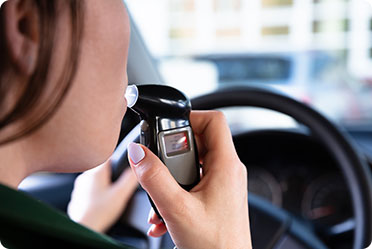
The basic principle underlying DUI / DWI breath testing is that each person’s body is essentially the same. That assumption is incorrect. Even a child can understand that. However, breath testing results are used as so-called evidence of intoxication in DUI / DWI prosecutions. [See recent news in the Washington Post “400 Drunken-Driving Cases in D.C. Based on Flawed Test” ] Listed below are three flawed premises that form the building blocks for breath testing.
In part, breath testing is based on the idea that each person’s blood has the same proportion of red blood cells per volume (45%). n actuality, the range of red blood cells per volume for men is between 42% and 54%. For women, the average range is between 38% and 46%. Furthermore, certain physical conditions, such as anemia, malnutrition, and excessive blood loss, will result in lower red blood cell counts. Conversely, higher than normal red blood cell counts occur in people living in high altitudes, chronic smokers, and people suffering dehydration. Ultimately, if the person who is breath tested has a red blood cell count different than 45%, then the breath test reading will be inaccurate.
A second premise is that each person has the same body temperature of 98.6 degrees Fahrenheit. Again, this is untrue. Various scientific studies dispute the concept that the average human’s temperature is 98.6 degrees Fahrenheit. Moreover, metabolism rates, chronic and acute illnesses, and the ingestion of certain drugs will cause higher body temperatures. Ultimately, a breath testing machine will falsely yield higher BAC readings if a person’s body temperature is higher than the average.
The third breath testing premise is that there is 1 molecule of alcohol in a sample of a person’s breath for every 2100 molecules of alcohol in a person’s blood sample. This 2100 to 1 ratio is an average estimated for each person. In reality, this ratio differs for each person. With breath testing, if a person has a blood to breath alcohol ratio half of the estimated average (1050 to 1), then that person’s breath alcohol reading will be two times higher than the person with the 2100 to 1 ratio. In simple terms, the person with the 1050 to 1 ratio could be wrongly accused of having a .10% BAC when his or her actual BAC was .05%. This problem can obviously lead to erroneous convicts for people charged with DUI / DWI.
It is also important to note that breath testing machines do not measure the actual amount of alcohol in a person’s blood (BAC). Breath testing machines only estimate how much alcohol is in a person’s blood. Directly testing blood samples is the more scientifically reliable method to determine BAC. But this process generally costs more money than breath testing.
As one can see, DUI / DWI breath testing is flawed in a number of ways. Unfortunately, the courts continue to allow breath testing machines to be used in DUI / DWI prosecutions. Therefore, the best way for the average citizen to combat the use of these devices is simply not to drink alcohol before driving. However, if you have been accused by the police of DUI / DWI, then hiring an experienced DUI / DWI attorney is the next best decision you can make.
Leckerman Law focuses on safeguarding the
rights of individuals charged with DUI, DWI, DAI, and
other alcohol-related criminal offenses - Call Us Now For
NJ DWI (856) 429-2323 | For PA DUI (215) 496-9292